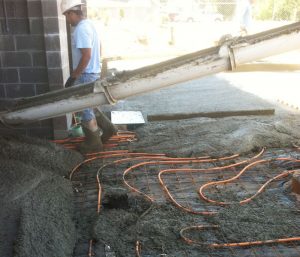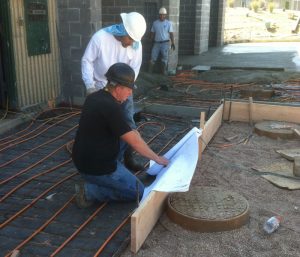
Investor Q&A Center

As successful, former owners ourselves, let us help you build your car wash from the ground up or make an existing car wash the best it can be!
Whether your needs are simply to replace your existing car wash equipment or to design your new car wash facility from the ground up, Advance Car Wash Solutions is ready to assist you in making the correct investment in all aspects of the process.
Here are some questions you may want to ask before getting started. We can help you with the answers.
- How much capital do I need to open a car wash? What are my financing options?
- What makes car washing profitable? What is my expected Return on Investment (ROI)?
- Should I build or acquire my business?
- How do I deliver a consistent, quality service?
- How should I structure and market my business?
ADVANCE CAR WASH SOLUTIONS OFFERS TOOLS PROVEN TO HELP DETERMINE WHETHER A CAR WASH IS A GOOD FIT FOR YOUR INVESTMENT PLANS. WE WORK WITH YOU THROUGH THE ENTIRE PROCESS!
BUILDING A COMMERCIAL CAR WASH WITH ADVANCE CAR WASH SOULTIONS






Self-Service Car Wash
Lot Selection
• A good rule to follow concerning lot sizing is 100 – 120 deep x a minimum of 75 wide depending on the number of bays. (Typical 4/bay self-serve wash would need a lot 100 – 120 deep x 100 wide minimum).
• Good access from both directions of traffic flow.
• Ideal traffic speed should be under 40 mph.
• Lot size and shape will determine if you design a “Drive-in-back-out” or “Drive-through” building. (Income streams tend to favor the “drive-through” design).
• Ideal locations are near residential areas, apartment complexes or busy traffic flow routes.
• The monthly lease payment should not exceed 15% of the gross monthly income of the wash.
Bay & Building Sizing
• Ideal bay size is 16 wide x 28 long (inside measurements).
• Truck bays should be 17 – 18 wide and 28 long. (Smaller bays will work but are not recommended.)
• Typical pump room is 10 – 15 wide x 28 length.
• Typical bay height is 10 for car bays and 12 – 14 for truck bays.
Building Placement
• Depending on specific codes, your building should be placed on the lot to allow for 1 – 2 cars minimum to be “stacked” behind each bay waiting to wash.
• Vacuums can be placed in this area but should not impede the normal flow into the bays.
• Make sure there are adequate drying and vacuuming areas that are out of the main traffic flow.
• Ideally, your bays should have a southern exposure to help reduce ice build-up in cold weather conditions.
• Local codes will also have “set-back” requirements on building placement.
Inside Vs. Outside Bays
• In many rural locations, washes can be built with an open outside bay for trucks, trailers, tractors, etc. However, as a rule an outside bay will bring in only about 40 – 50% of the revenue of an inside bay.
• From a revenue standpoint, it is always better to enclose all bays and build one larger if you feel you will have adequate truck traffic. This bay can also be used for cars if other bays are busy.
Revenue Projections-Bays
• Studies find that it takes a population base of 1000-1500 people to support 1 self-serve bay. (A town of 5000 people could theoretically support a total of 5 self-serve bays between all competitors.)
• At this population level the national average is approximately $1350 per bay, per month of gross income for one self-serve bay. (This is an estimate average only; incomes can and do vary.)
Revenue Projections-Vacuums
• The ideal number of vacuums to have is 1 – 1/2 vacuums per 1 bay of self-serve (i.e., a 3/bay wash should have 4 – 5 vacuums placed somewhere on the lot).
• National average of revenue per vacuum is approximately $222 per vacuum per month in gross revenue. (Incomes can and will vary.)
Operating Cost Projections
• Coming Soon
Options & Features
• Typical self-serve washes will offer hot wash, hot rinse-winter & cold rinse-summer, hot or cold wax, foamy brush and spot-free rinse.
• An important feature is “Spot-Free Rinse”. This feature increases revenue stream because customers “buy” another cycle of time to get this feature – a potential to double the income from each customer using this feature.
• Tire Cleaner and Pre-soak systems are also options that increase customer satisfaction as well as income stream.
• It is our strong recommendation that Instantaneous Tank-less water heaters be used in place of conventional water heaters. These heaters can reduce gas costs up to 40% vs. conventional heaters. (If it rains for a week, only the pilot is using gas on these type of heaters vs. conventional heaters which heat the water column continuously rain or shine).
• Cold climate washes should not be without a floor heat system. These systems reduce liability and increase customer satisfaction. In-floor circulating systems are most popular. However, above-head radiant tube heaters also give the benefit of heating the floor as well as the customer.
• For floor heater sizing, it is wise to also heat 3? – 4? on the entrance and discharge aprons. This will reduce liability in the customer “walk” areas as they use bill changers and vendors.
• Bill changers are also a necessity. Studies have shown a minimum 10% increase in gross revenues in washes with changers. $1 & $5 changers are now the norm in all new wash facilities, with $10 & $20 optional.
• Vending products such as towels, Armorall, window cleaner and fragrance trees should not be overlooked as an added revenue source. (Average vending per wash location is approximately $347 per month in total gross revenue).
• We hope this information will be beneficial to you in your investment planning. Please contact us for additional information.
Revenue Projections-Vending
• National average of vending revenue is approximately * $347 per month gross revenue based on offering at least 4 different vending products.
Financing
• Typically, car washes cost from $1.5 – $3.5 million including land, building and equipment. While some individuals may have this in their checking account, most seek some type of financing assistance.
• A number of financing options are available including bank loans, SBA loans and leasing. ACWS can help you determine what is the best option for your situation.
